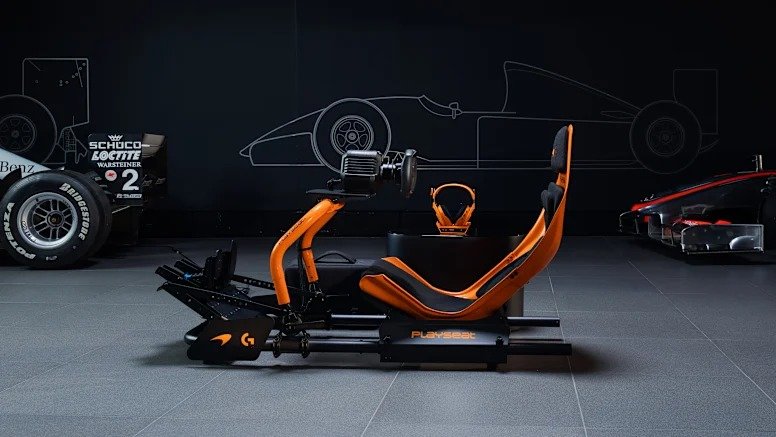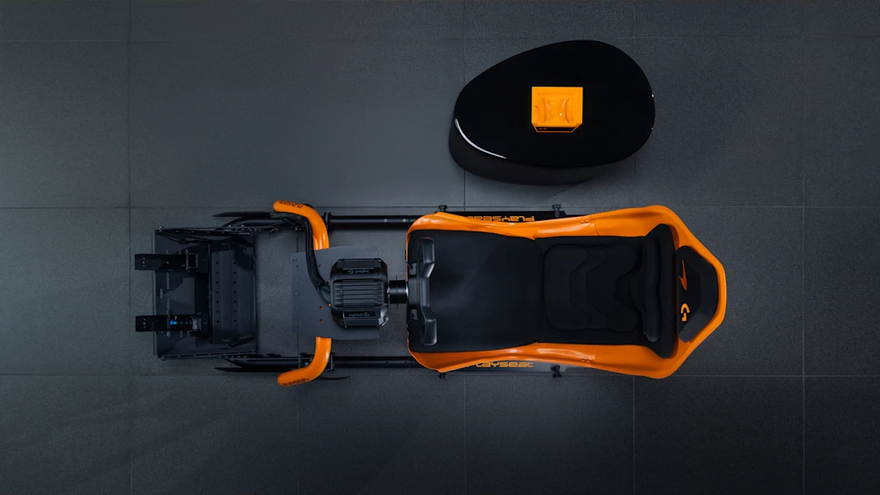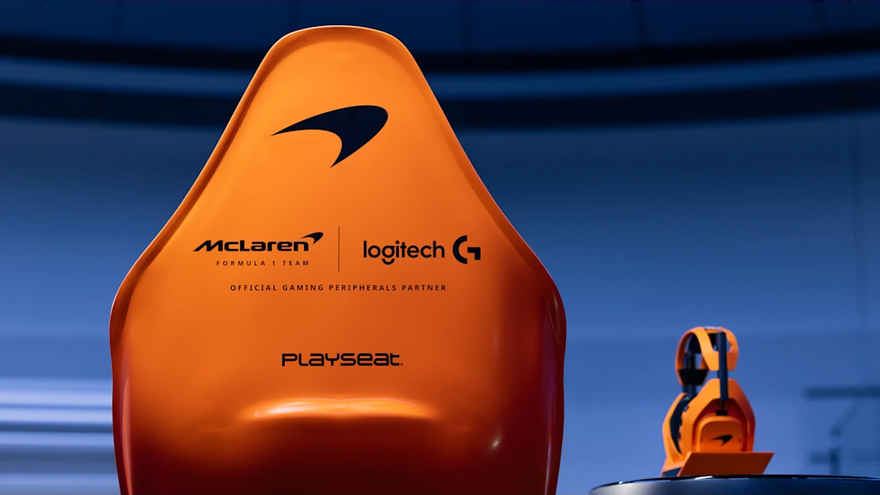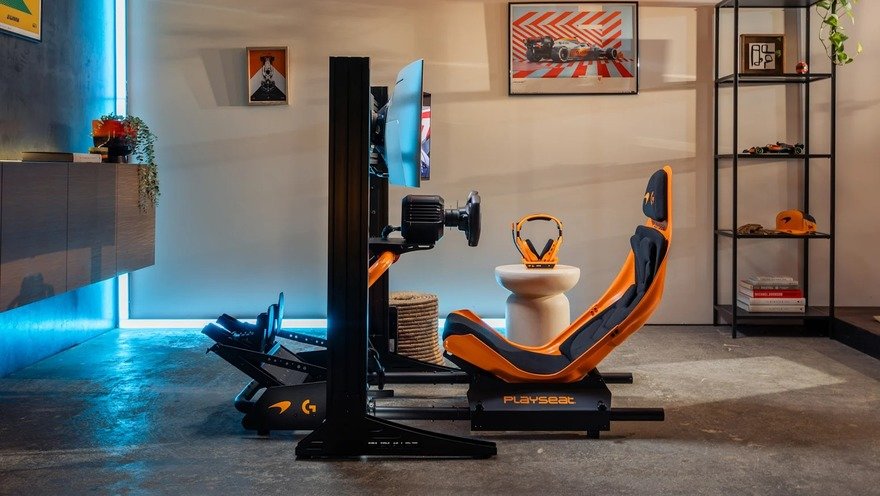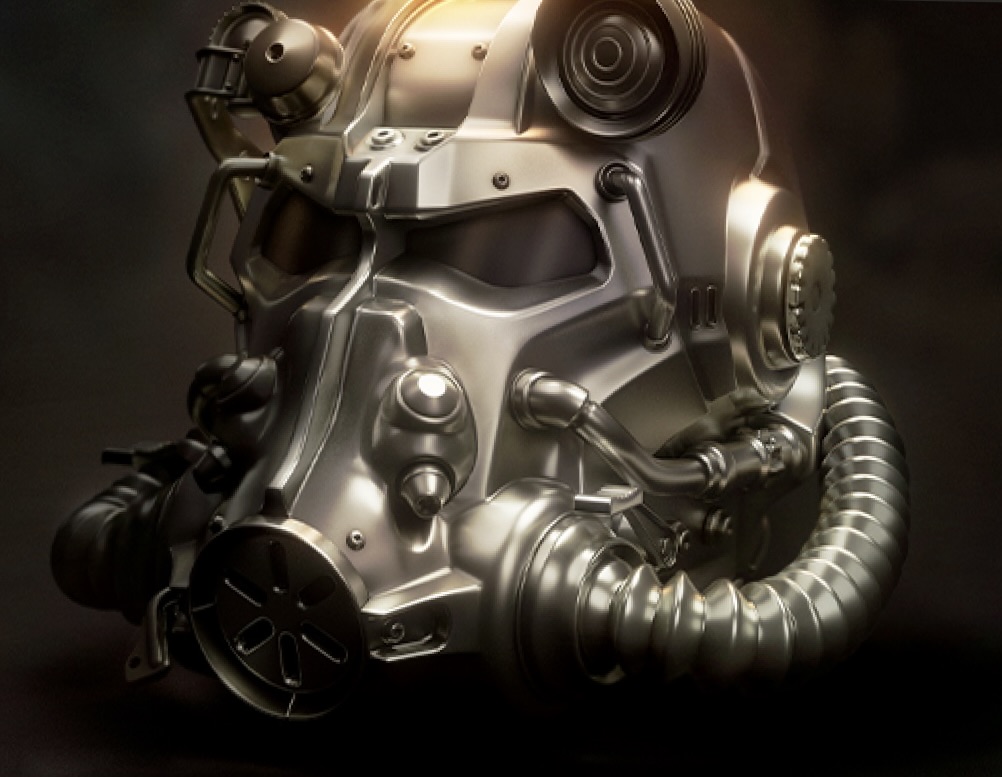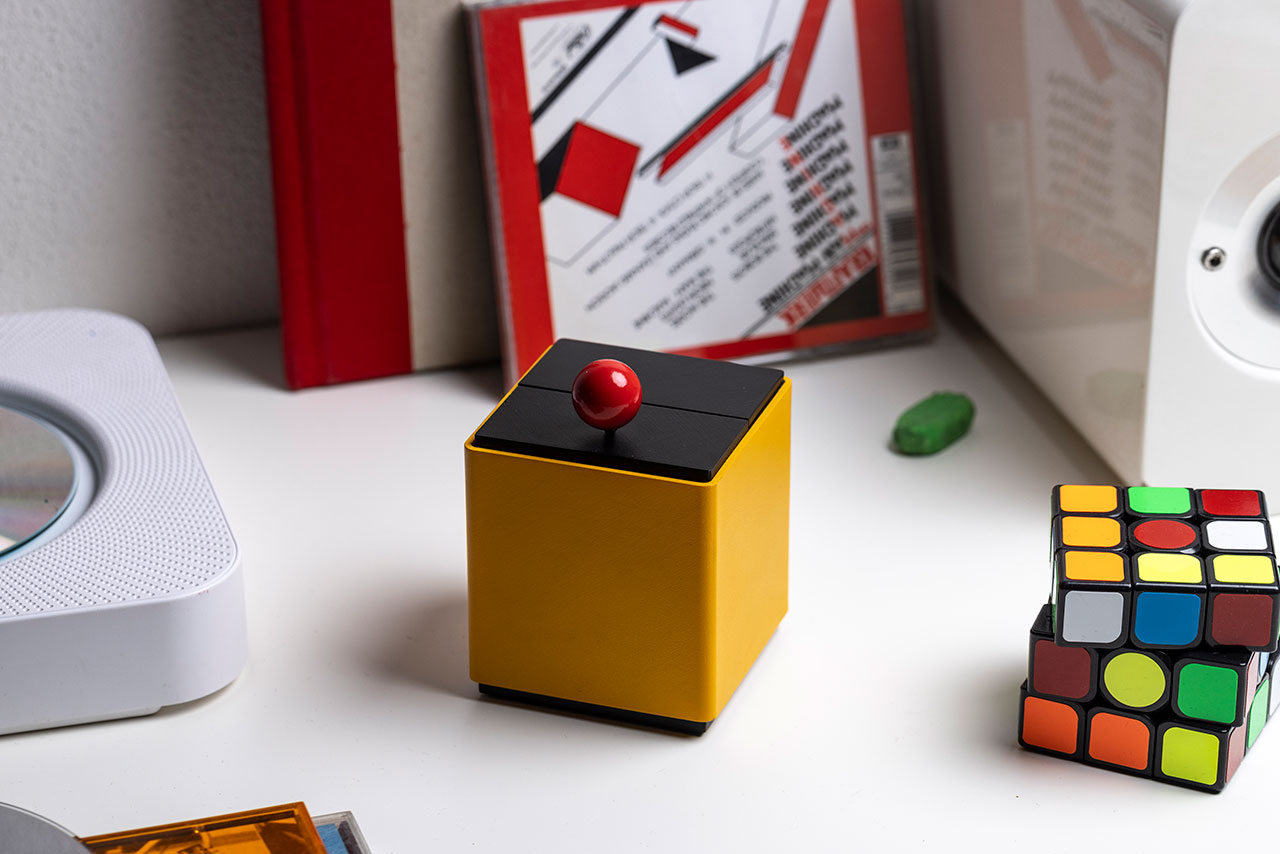Sim racing isn’t simply a pastime anymore—it’s the new motorsport frontier. With F1 esports, endurance leagues, and real drivers using simulators for training, the racing seat has become a statement piece of precision engineering. At the center of this evolution stands the PLAYSEAT® Formula Instinct McLaren Racing Edition, a sculptural, performance-tuned cockpit that bridges the gap between fan passion and factory-grade realism.
Developed in partnership with McLaren Racing and Logitech G, this simulator rig embodies the meticulous craftsmanship and data-driven ergonomics of Formula 1 itself. It’s not just a chair; it’s a chassis. Every contour, material choice, and angle is optimized to reproduce the posture, resistance, and sensory cues of a real single-seater car.
lang
The first impression of the Formula Instinct is visceral. Its carbon-steel frame, coated in McLaren papaya orange, curves with the aerodynamic logic of a monocoque. The stance is low and aggressive, mimicking the body position of F1 and IndyCar cockpits—knees raised, arms extended, head tucked slightly forward.
The seat shell is crafted from a composite fiber blend lined with high-density foam and wrapped in Alcantara-like microfiber. This tactile surface not only resists heat and wear during long sessions but replicates the feel of McLaren’s race-team interiors. Adjustable pedal plates and wheel mounts allow fine-tuning of driving position, ensuring that whether you emulate Lando Norris or Max Verstappen, the cockpit accommodates the nuances of each driving style.
PLAYSEAT’s engineers collaborated with McLaren’s simulation department to replicate real-car telemetry ergonomics. The rig’s pitch, recline, and rigidity are based on data gathered from the team’s F1 simulators in Woking. That means every flex and vibration serves a functional purpose—immersive realism built on mechanical integrity.
engineer
At its core, the Formula Instinct is an industrial-grade structure. The cockpit’s fully adjustable pedal base supports load-cell braking systems up to 200 kg of resistance, while the wheel mount can accommodate direct-drive bases producing up to 25 Nm of torque—powerful enough for Fanatec Podium DD2 or Logitech G Pro Racing Wheel units.
Cable management channels run discreetly beneath the frame, maintaining a clean aesthetic—a crucial detail for those integrating multiple peripherals such as handbrakes, button boxes, or telemetry displays.
Under acceleration and braking simulations, torsional rigidity keeps feedback consistent; the frame doesn’t flex or creak, even under extreme torque loads. The design allows motion-platform integration for users who want haptic or hydraulic systems—proof that the cockpit is as expandable as it is refined.
ergonomics
True simulation depends on posture. In Formula 1, the driver’s body is almost horizontal, the spine aligned to absorb G-forces. PLAYSEAT reproduces that geometry with an ergonomic recline angle between 35° and 45°, depending on configuration.
Lumbar contouring follows the natural S-curve of the back, relieving pressure points during endurance sessions. The result is not merely comfort but endurance performance—critical for sim racers who may compete in six-hour or 24-hour events.
Beyond comfort, the psychological immersion is remarkable. The seat isolates the body, forcing the mind into race focus. When paired with a high-fidelity wheel and VR or ultrawide display, every motion—steering resistance, pedal compression, gear flick—creates the illusion of velocity.
mclaren x logitech synergy
This rig represents more than aesthetic branding; it’s a collaborative ecosystem between McLaren’s racing heritage and Logitech’s technological precision. Logitech G’s expertise in force feedback and sensor calibration informed much of the cockpit’s hardware compatibility.
Bundled marketing often pairs the rig with the Logitech G Pro Racing Wheel and Pro Pedals, a combination delivering realistic hydraulic feel and precise telemetry output. Together, the hardware and chassis form a cohesive system where physical and digital responses sync seamlessly.
McLaren’s influence appears not only in color but in design philosophy. The attention to aerodynamic contour, efficient assembly, and minimal structural weight speaks to the team’s F1 principles: every gram and angle serves performance.
material
A good racing simulator must look as good as it performs—and the Formula Instinct easily passes that test. The matte-orange frame contrasts with satin-black components, giving it the aura of a pit-lane artifact rather than home furniture.
The seat’s silhouette borrows cues from McLaren’s MCL60 chassis, with side cutouts that echo the car’s air intakes. Branding is restrained: a subtle McLaren speedmark logo, PLAYSEAT embossing along the base, and a discreet Logitech G signature—allowing the design to exude authenticity rather than fandom excess.
Every surface is touch-ready. The powder-coated frame resists fingerprints; the seat fabric maintains grip under sweaty, high-intensity driving. It’s a rig you can leave in a minimalist living room and still impress guests—functional sculpture in motion.
grid
The first session inside the Formula Instinct feels transformative. The low seating position changes how the brain interprets the virtual track—braking zones feel sharper, corner entry becomes instinctive, and steering corrections feel bodily rather than visual.
The combination of direct-drive torque and load-cell pedal pressure forces drivers to engage their core muscles, replicating the physical demands of real racing. The tactile realism extends beyond force feedback—the slight resonance of the frame mimics the mechanical hum of an F1 cockpit.
When used with dynamic software like Assetto Corsa Competizione, iRacing, or F1 2024, the synergy between the game’s physics engine and the rig’s structural rigidity creates a sensory loop so convincing that even professional racers attest to its authenticity.
culture
The Formula Instinct represents McLaren’s growing presence in digital motorsport. Beyond its esports team, McLaren views simulation as part of its future pipeline—training, fan engagement, and brand immersion. The PLAYSEAT collaboration aligns with that philosophy, extending the McLaren experience into homes, studios, and event spaces worldwide.
Sim racing has become a touchpoint for younger demographics who may never attend a Grand Prix but spend hours perfecting laps online. For them, McLaren’s orange seat is a gateway into the mythology of speed. It’s brand storytelling through design—a way to live the fantasy of being in the cockpit, not just cheering from the sidelines.
perspective
Within the broader racing-sim market—currently worth over $500 million and projected to hit $2 billion by 2033—the Formula Instinct sits comfortably in the premium tier. It caters to serious enthusiasts, semi-professional racers, and collectors who view simulation gear as both sport equipment and lifestyle object.
Competitors like Next Level Racing GT Elite or SimLab P1-X emphasize adjustability and industrial minimalism, but PLAYSEAT differentiates through design heritage. Its collaboration with McLaren adds emotional value—a fusion of racing prestige and consumer accessibility.
Moreover, PLAYSEAT’s presence in official F1 esports and broadcast environments cements its credibility. The rigs appear not only in fans’ homes but also in professional studios and team facilities, creating cross-visibility that fuels demand.
usability beyond racing
Though optimized for Formula racing, the rig’s adjustability allows for adaptation to GT or rally setups by swapping wheel types or pedal angles. Some users even repurpose it for flight simulation or vehicle-dynamics research, leveraging its rigidity and modular mounting points.
With VR integration, the Formula Instinct becomes a sensory portal. Coupled with motion feedback and spatial audio, the seat delivers cinematic immersion fit for training or entertainment. As mixed reality matures, this rig could evolve into a universal cockpit for multiple simulation disciplines.
future
What the Formula Instinct embodies is a broader trend in gaming: tactility. As digital experiences become hyper-realistic, users crave physical feedback. The cockpit answers that desire by making immersion tangible—where your body, not just your eyes, believes the simulation.
In the next decade, expect these rigs to become mainstream furnishings in gaming spaces, much like high-end PCs or VR headsets. They represent the intersection of play and performance—a sign that gaming’s future isn’t passive consumption but physical participation.
impression
The PLAYSEAT® Formula Instinct McLaren Racing Edition is more than a racing seat; it’s an architectural translation of speed. It merges McLaren’s Formula 1 DNA with PLAYSEAT’s simulation craftsmanship and Logitech’s precision feedback technology.
Every curve, weld, and texture has purpose—channeling the art of motorsport into domestic space. Its existence marks the maturation of sim racing from hobbyist pursuit to design-driven discipline, where ergonomics, aesthetics, and performance fuse seamlessly.
For those chasing immersion that feels indistinguishable from reality, this rig represents the pinnacle—a cockpit that doesn’t just imitate the race car, but embodies it.
In the age where motorsport lives as much on screens as on asphalt, the Formula Instinct stands as a symbol: that even in virtual space, the spirit of McLaren still drives forward—fast, fearless, and unmistakably orange.
No comments yet.

